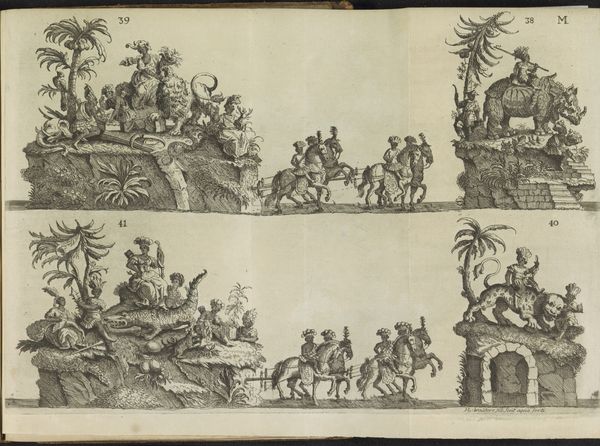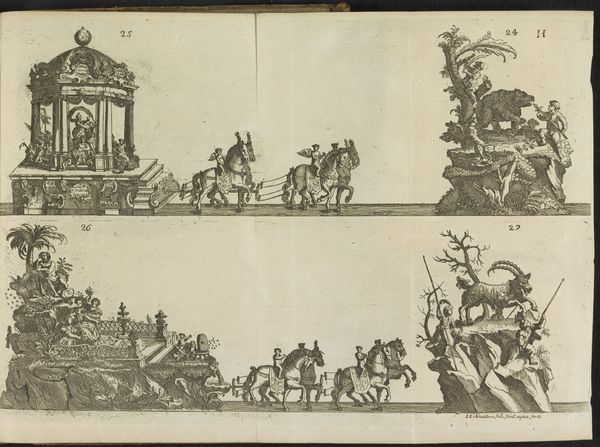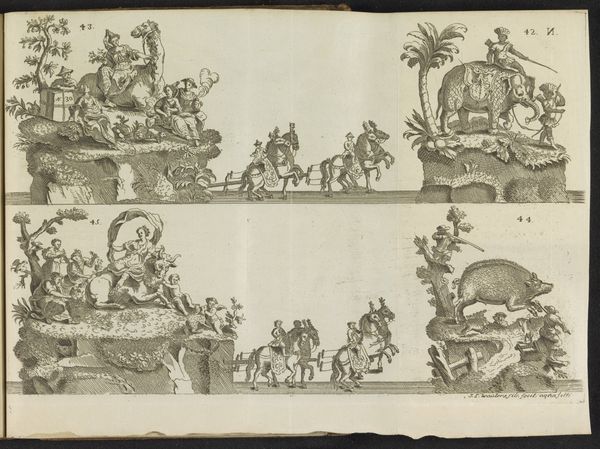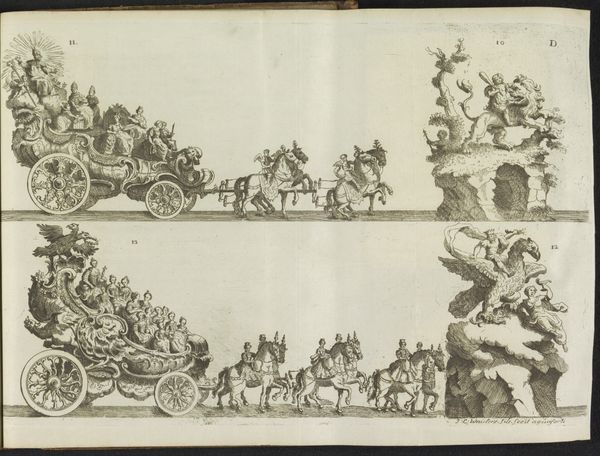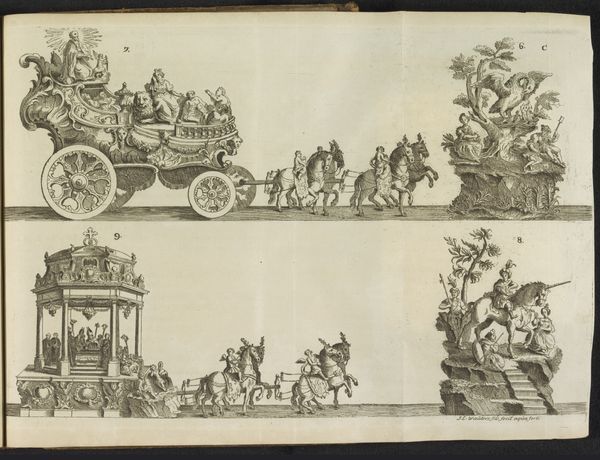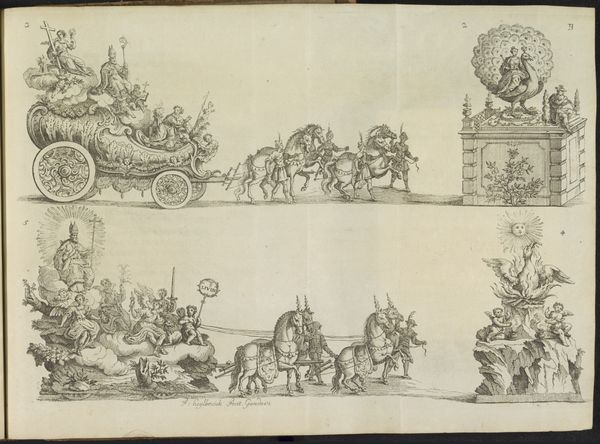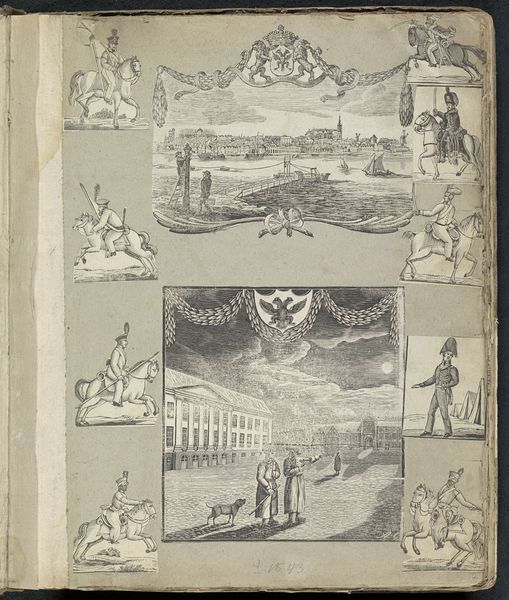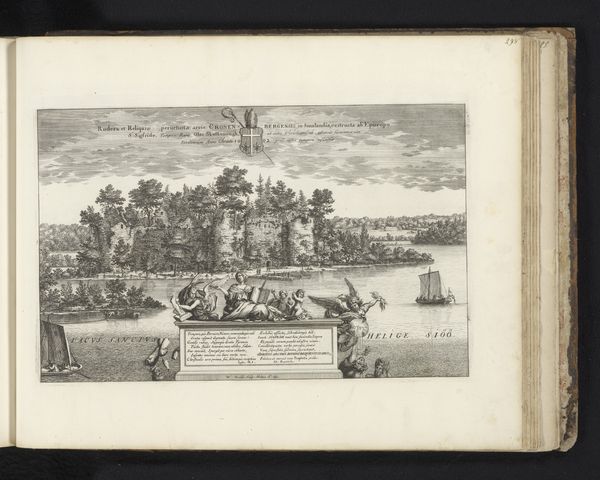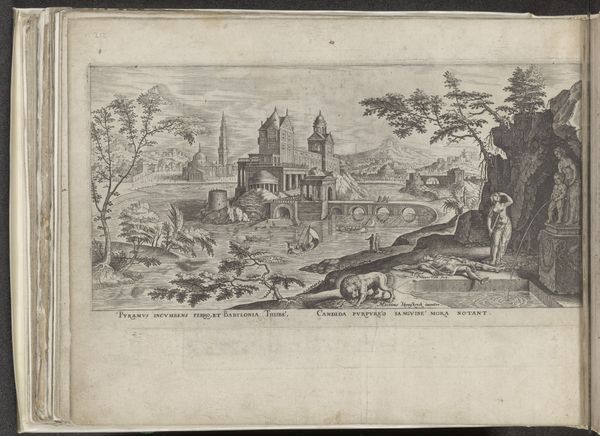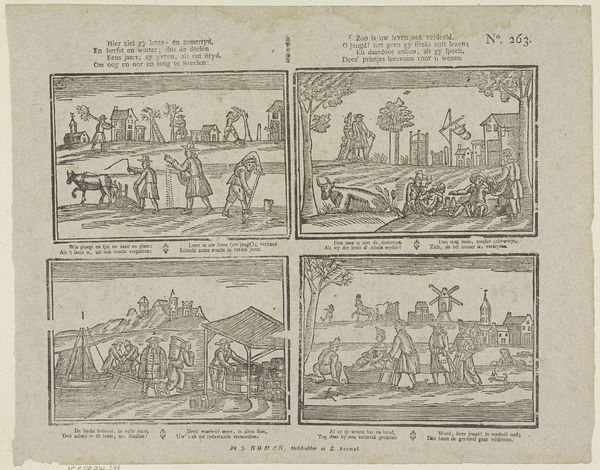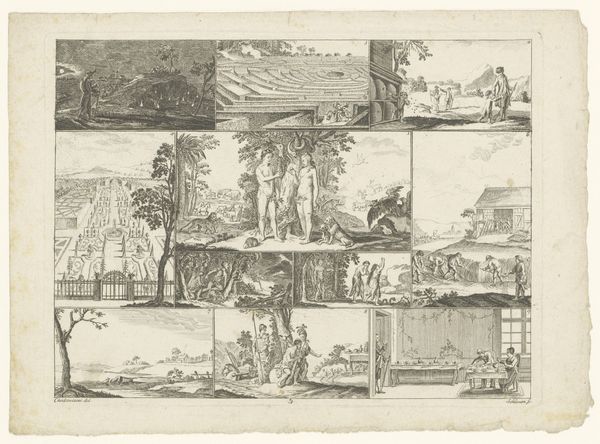
Dimensions: height 240 mm, width 370 mm
Copyright: Rijks Museum: Open Domain
Curator: This etching by Pieter Wauters, created in 1767, is entitled “Blad K: zeventiende en achttiende praalwagen.” The print depicts baroque floats and elaborate structures, hinting at celebrations and perhaps processions of some kind. Editor: It's immediately striking how detailed the drawing is, despite its relatively small scale, almost like an array of intricate architectural models. The contrast of light and shadow gives them depth, despite being printed on a two-dimensional plane. Curator: Absolutely. When we look closer at each individual section of the print, what becomes evident is how Wauters situates each float or structure within the larger context of seventeenth- and eighteenth-century societal spectacle, exploring its roots in traditions of power, and maybe colonial fantasy as we see with the Camel section, where the characters surrounding the animal wear almost stereotypical native clothes. Editor: Yes, the way each form relates to another on the page also reveals patterns of scale, weight, and proportion. Consider, for example, how the structure at the bottom-left echoes the pavilion on the float with an almost mathematical perfection, yet remains distinct. The details on the animals feel less stylized and more grounded than those in the figurative depictions. Curator: Looking at it from a feminist point of view, I find myself questioning what is not shown. What roles were women relegated to, what labor supported such opulent display, what colonial resources fueled them, and how can we use that perspective today. Editor: That's a very interesting way of considering that the etching as a construction, just like the pageant wagons that appear. Perhaps what we're really considering are the layers of symbols that operate formally to reinforce power in their relationships, which are further contextualized and complicated as social reflections and historic record. Curator: By bringing together these considerations of societal forces and detailed technique, we start to have a broader sense of how the art of Pieter Wouters reflected its contemporary time while also allowing a look at some less exposed underpinnings. Editor: I appreciate seeing how each symbolic object adds to our structural understanding of the piece, like looking through a beautifully illustrated historical record.
Comments
No comments
Be the first to comment and join the conversation on the ultimate creative platform.
